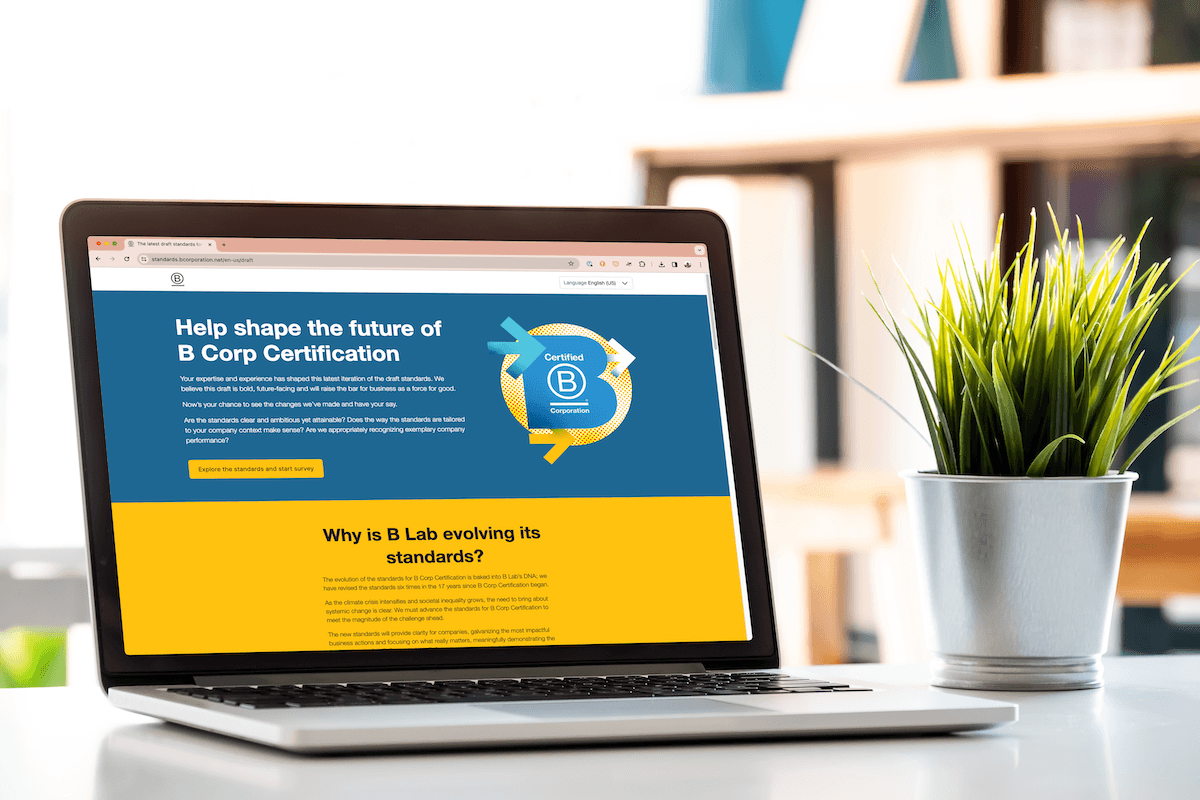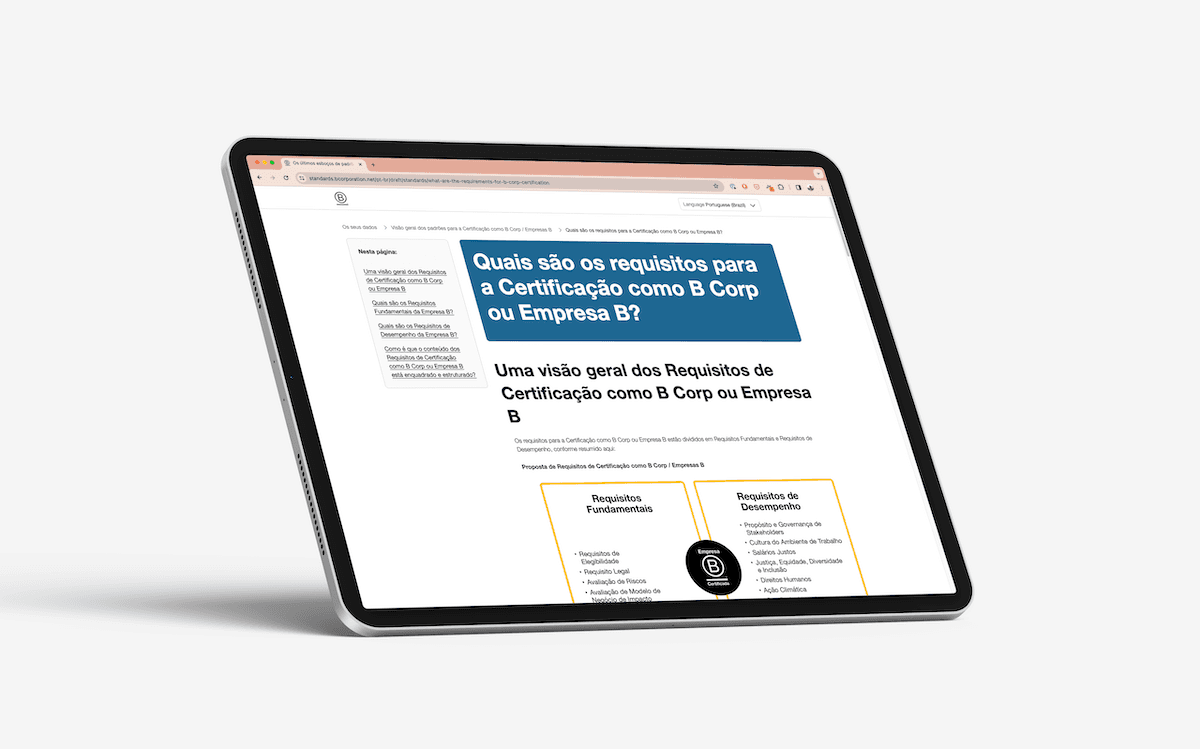Combining AI and human expertise to support multiple languages efficiently
Working collaboratively, B Lab and Futurice have rapidly delivered a multi-language website to support a consultation on the latest draft of the B Corp certification standards. This article focuses on our learning from implementing an innovative multi-language approach to this work.
B Lab is a nonprofit network transforming the global economy to benefit all people, communities, and the planet (Read more here). One of the ways that B Lab works to drive societal change is through the certification of companies, known as B Corps, that meet environmental, governance and social standards. B Lab is in the process of evolving the standards for B Corp Certification to ensure they remain relevant for the challenges of today and tomorrow; they have revised the standards six times in the 17 years since B Corp Certification began.

As the climate crisis intensifies and societal inequality grows, the need to bring about systemic change is clear. B Lab must continue to advance the standards for B Corp Certification to meet the magnitude of the challenge ahead.
The new standards will provide clarity for companies, galvanising the most impactful business actions and focusing on what really matters, meaningfully demonstrating the leadership role that B Corps and the B Corp movement play in the world.
In 2022, B Lab ran an initial consultation to gather feedback on the draft standards. This consisted of a 90-page PDF and a separate survey, and participants shared that the user experience could be improved. To increase engagement rates in the second consultation, and recognising the need to take a different approach for this much more comprehensive draft of the standards, B Lab engaged Futurice to develop a consultation experience to increase engagement and improve the user experience, integrating the standards and survey so that users could share feedback with ease. Additionally, to further the reach and engagement of the consultation and ensure an inclusive process, B Lab wanted to publish the consultation in five languages.
Working collaboratively, we rapidly designed and implemented a solution to host the latest draft standards in a Contentful CMS and display this alongside a survey via a responsive UI.
To deliver a multi-language experience within the constraints of the project we agreed that combining AI translation with human proofreading would provide the best outcomes.
The starting point for this work was the recognition that while AI could speed up the initial translation, it would not be able to provide a high enough quality of translation without expert human input - the language of the B Corp standards is very specific and would require subject matter expertise and understanding of the context to ensure accuracy of translation. For example, in some automated French translations a mention of the B Lab ‘board’, was mistranslated as ‘cheese board’.
AI translation has existed for a long time, but only in recent years has the quality of the translation started to reach a point where they are a genuine option for the majority of professional use cases. Saying that, even the best in the market is not ready to replace manual translation completely, therefore a combination of automated translation and further editing was designed to get the right mix of speed, efficiency and accuracy. Even if automatic translations take another leap forward in quality, there is such a degree of subjectivity in copy editing that someone would always need oversight to ensure a company's message and tone are conveyed accurately.
We set out to create a system that would allow editors to instantly request translations of English content, manually edit them where required and protect certain phrasing to reduce the need for ongoing editing. In addition, it was key that editors could see their changes immediately in situ using a preview function before publishing.
Firstly, we carried out blind tests using six different AI translation services in all the languages that were in scope for this project. Based on the results of those tests we decided to implement translation using the DeepL service. As well as supporting fast translation in multiple languages via an API connected directly to Contentful, this service also supports the use of a ‘glossary’ of specific terms. This enabled us to manually translate important, repeated phrases and ensured we didn’t end up with any ‘cheese board’ references in the final text! To do this, the language experts identified important terms that needed to have fixed translations. These are built into a glossary of terms which the translation service uses whenever it encounters that term.

One of the first hurdles we faced was in generating a translation request – Contentful can send requests to other services based on actions taken, such as publishing or creating content entries but they can only be generated under certain conditions, one of which is a manual save request. With no way to generate these in their web editor, we got creative and made our own small plugin that would allow any editor to do this on any content entry. This was paired up with a specific user account for the system in order to prevent updates from generating a cycle of further translation requests.
Next up, our content had to be modelled in such a way that multiple language editors could make changes, as well as translation requests, without the system overwriting other editor’s work. This was handled through a quirk in Contentful’s localisation setup that we took advantage of to add language-based toggles to any fields we wanted, providing fine-grained control over which fields got translated and when.

Finally, our API provided the go-between to facilitate communication between Contentful and DeepL, ensuring that all content, from simple text through to text lists and rich text embedded with images, styling and other entries, was formatted correctly and stored back in the correct place.
This process allows us to upload English language content in Contentful and trigger a translation using the DeepL language model and our specific glossary of terms. The resulting text is then stored back into Contentful and can be further refined by a language expert if required.
The impact of this work has been significant, making it feasible to B Lab to launch the standards consultation in multiple languages in a much shorter timeframe by automating much of the simpler translation while still ensuring an element of quality control through human review and editing. This solution also has the advantage of enabling scaling much more rapidly; additional languages can be added and as the glossary is built out over time, more content can be created in multiple languages with great accuracy on each iteration.
You can access the consultation site at: https://standards.bcorporation.net/en-us/draft.
 Tom CastleStrategy Principal, UK
Tom CastleStrategy Principal, UK





